Home > Way to enjoy in ViennaList > Vienna Sightseeing: 7 Best Sights
Home > Way to enjoy in ViennaList > Vienna Sightseeing: 7 Best Sights

Vienna is full of great sights and things to see!
If you are on a short trip, time might be scarce…
Just take this list of our personal recommendations to explore the Austrian capital in just one day!!
We would suggest a little walking tour through the Vienna city center that passes 6 most important sights!
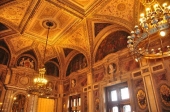
The Vienna State Opera is an opera house – and opera company – with a history dating back to the mid-19th century. It is located in the centre of Vienna, Austria. It was originally called the Vienna Court Opera . In 1920, with the replacement of the Habsburg Monarchy by the First Republic of Austria, it was renamed the Vienna State Opera. The members of the Vienna Philharmonic are recruited from its orchestra.
【Next: Hofburg Palace】
about 10 minutes walk from Vienna State Opera
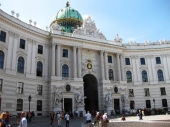
Hofburg Palace is a palace located in Vienna, Austria, that has housed some of the most powerful people in European and Austrian history, including the Habsburg dynasty, rulers of the Austro-Hungarian Empire. It currently serves as the official residence of the President of Austria. It was the Habsburgs' principal winter residence, as the Schönbrunn Palace was their preferred summer residence.
【Next: Austrian Parliament Building】
about 5 minutes walk from Hofburg Palace
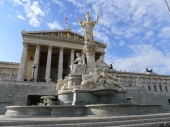
The Austrian Parliament Building in Vienna is where the two houses of the Austrian Parliament conduct their sessions. The building is located on the Ringstraße boulevard in the first district Innere Stadt, near Hofburg Palace and the Palace of Justice. It was built to house the two chambers of the Imperial Council (Reichsrat), the bicameral legislature of the Cisleithanian (Austrian) part of the Austro-Hungarian Empire. Up to today, the Parliament Building is the seat of the two houses—the National Council (Nationalrat) and the Federal Council (Bundesrat)—of the Austrian legislature.
【Next: St. Stephen's Cathedral】
about 15 minutes walk from Austrian Parliament Building
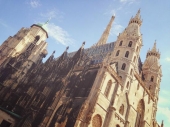
St. Stephen's Cathedral is the mother church of the Roman Catholic Archdiocese of Vienna and the seat of the Archbishop of Vienna, Christoph Cardinal Schönborn, OP. The current Romanesque and Gothic form of the cathedral, seen today in the Stephansplatz, was largely initiated by Duke Rudolf IV (1339–1365) and stands on the ruins of two earlier churches, the first a parish church consecrated in 1147. The most important religious building in Vienna, St. Stephen's Cathedral has borne witness to many important events in Habsburg and Austrian history and has, with its multi-coloured tile roof, become one of the city's most recognizable symbols.The funeral of the Italian composer, Antonio Vivaldi was held in this cathedral in 1741.
【Next: Naschmarkt】
・about 20 minutes walk from St. Stephen's Cathedral
・1 stop from Stephansplantz station to Karlsplantz station
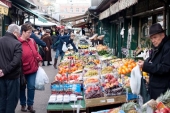
The Naschmarkt has existed since the 16th century when mainly milk bottles were sold (as milk bottles were made out of ash (wood from an ash tree), "Asch" (German for "ash") led to the name "Aschenmarkt"). From 1793 onwards, all fruits and vegetables brought to Vienna with carts had to be sold there, while goods arriving on the Danube were sold elsewhere. Nowadays, one can buy fresh fruit and vegetables from around the world, exotic herbs, cheese, baked goods such as bread, kaiser rolls, and torte, meats, and seafood. There are also many small restaurants which offer e.g. sushi, kebab, seafood, traditional Viennese food such as Kaiserschmarrn or Palatschinken (compares to rolled up crepes) and stalls which offer clothes and accessories. Since 1977, the market extends further along the Wienzeile to an adjacent area every Saturday, when a flea market takes place there.
【Next: Schönbrunn Palace】
take subway from Karlsplantz staion to Schönbrunn station

Schönbrunn Palace is a former imperial 1,441-room Rococo summer residence in modern Vienna, Austria. One of the most important cultural monuments in the country, since the 1960s it has been one of the major tourist attractions in Vienna. The palace and gardens illustrate the tastes, interests, and aspirations of successive Habsburg monarchs.
The Cultural World Heritage Site of Schönbrunn Palace is Austria’s most frequently visited tourist attraction. In the palace the residential and state rooms with their original furnishings and decorations convey an authentic impression of the imperial lifestyle. The park and gardens surounding the palace make Schönbrunn a unique synthesis of Baroque art.
Near